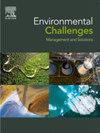The role of smart green tourism technologies in shaping tourist intentions: Balancing authenticity and sustainability in natural tourism
Q2 Environmental Science
引用次数: 0
Abstract
This study addresses a critical gap in understanding how smart green tourism technologies (SGTT) shape tourist intentions in natural tourism settings by integrating Service-Dominant Logic (SDL) and the Theory of Planned Behavior (TPB). Unlike previous research that primarily examines SGTT in urban tourism, this study uniquely investigates its application in diverse natural tourism contexts. Grounded in these two theoretical perspectives, the research explores the extent to which smart technologies influence tourists' revisit intentions, recommendations, and the intention to buy local products, with particular attention to the differential effects of each smart tourism component. The study addresses the theoretical gap regarding the extent to which smart technologies enhance or detract from the authenticity of natural tourism experiences, while also promoting sustainable behaviors. Furthermore, this research contributes to the debate on the paradox of technology in tourism by examining how the introduction of SGTT can either enhance or undermine authenticity. By differentiating between the roles of STH, STE, and STS, the study provides empirical insights into how different types of smart tourism technologies—particularly service-based platforms— may influence sustainable choices while preserving or challenging perceived authenticity. Using a sample of 400 tourists in Thailand, the research employs structural equation modeling (SEM) to analyze the relationships between natural tourism types, smart technologies, and tourist intentions. The findings reveal that while Smart Tourism Services (STS) significantly enhance tourist intentions, Smart Tourism Hubs (STH) and Smart Tourism Experiences (STE) demonstrate more limited or non-significant influence, suggesting their impact may depend heavily on context and user expectations. This nuanced perspective advances theoretical discourse by demonstrating that different smart tourism technologies yield varying levels of influence on tourist behavior.
智能绿色旅游技术在塑造游客意向中的作用:平衡自然旅游的真实性和可持续性
本研究通过整合服务主导逻辑(SDL)和计划行为理论(TPB),解决了理解智能绿色旅游技术(SGTT)如何在自然旅游环境中塑造游客意图的关键空白。与以往主要考察城市旅游中SGTT的研究不同,本研究独特地考察了其在不同自然旅游环境中的应用。基于这两个理论视角,本研究探讨了智能技术在多大程度上影响游客的重访意愿、推荐和购买当地产品的意愿,并特别关注每个智能旅游组成部分的差异效应。该研究解决了关于智能技术在促进可持续行为的同时增强或削弱自然旅游体验真实性的程度的理论差距。此外,本研究通过考察SGTT的引入如何增强或破坏真实性,有助于讨论旅游业中的技术悖论。通过区分旅游科技、旅游科技和旅游科技的角色,该研究提供了经验见解,了解不同类型的智能旅游技术(特别是基于服务的平台)如何影响可持续发展的选择,同时保持或挑战感知的真实性。本研究以400名泰国游客为样本,采用结构方程模型(SEM)分析自然旅游类型、智能技术和游客意向之间的关系。研究结果显示,虽然智慧旅游服务(STS)显著提高游客意愿,但智慧旅游中心(STH)和智慧旅游体验(STE)的影响较为有限或不显著,这表明它们的影响可能在很大程度上取决于环境和用户期望。通过证明不同的智能旅游技术对游客行为产生不同程度的影响,这一细致入微的观点推进了理论论述。
本文章由计算机程序翻译,如有差异,请以英文原文为准。
求助全文
约1分钟内获得全文
求助全文
来源期刊

Environmental Challenges
Environmental Science-Environmental Engineering
CiteScore
8.00
自引率
0.00%
发文量
249
审稿时长
8 weeks
 求助内容:
求助内容: 应助结果提醒方式:
应助结果提醒方式:


